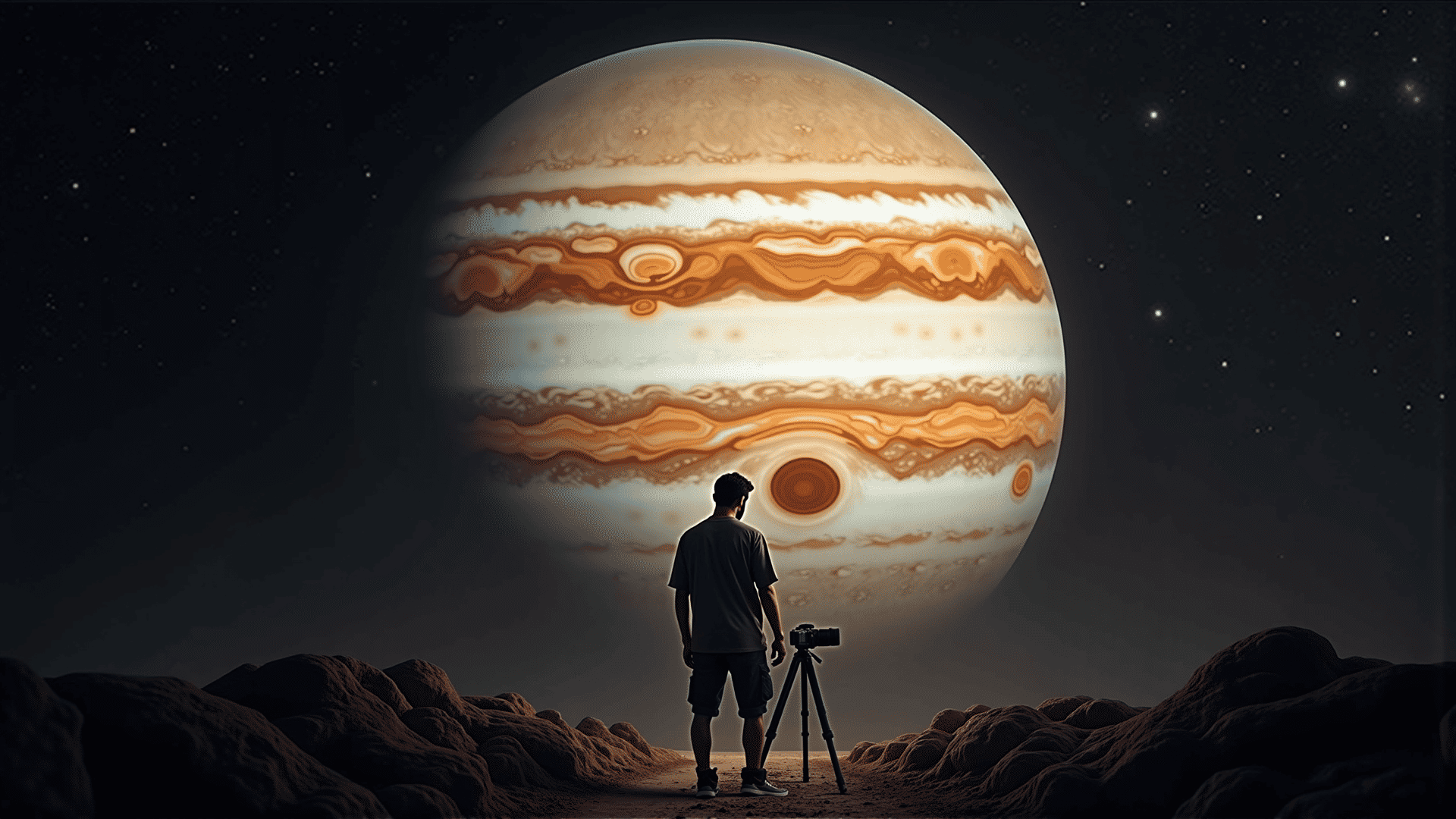Jupiter: The Gas Giant's Dance captivates all those who gaze upon its swirling clouds and vivid colors. As the largest planet in our solar system, Jupiter's dynamic movements and striking features make it a subject of endless intrigue and beauty for both professional and amateur astronomers alike.
The first thing one notices about Jupiter is its iconic stripes, formed by powerful winds moving at hundreds of miles per hour in opposing directions. These bands consist largely of ammonia clouds, which are given their colors by various unknown agents within them. The alternating dark and light bands create a mesmerizing effect as they shift and change, driven by the planet's internal heat source.
Among the most fascinating features on Jupiter’s surface is the Great Red Spot, a colossal storm larger than Earth, which has raged for centuries. This persistent high-pressure region is characterized by zesty hues of red, orange, and white, and serves as a grand spectacle for the watchful eyes of astronomers. The Great Red Spot's endurance and vigor offer deep insight into the planet’s atmospheric dynamics, fueling discussions and studies to understand its composition and energy source.
For those interested in capturing the spectacle of Jupiter on camera, the process can be as rewarding as it is challenging. To photograph Jupiter's stunning details, one requires a telescope, ideally with an aperture of at least 4-6 inches. Pairing the telescope with a digital camera or smartphone adapter allows for magnification of the planet's features. It's advantageous to photograph Jupiter when it's positioned high in the sky and the atmosphere is stable, usually in the early morning or late at night, to minimize distortion caused by Earth's atmosphere.
The use of various filters can help highlight different aspects of the planet. For instance, a blue filter can enhance the contrast of the cloud belts, making them more pronounced, while a red filter can be used to accentuate the Great Red Spot. Patience is key, as capturing fine details requires both steady conditions and practice in focusing.
Jupiter’s dance in the night sky continues to inspire those who seek to uncover the secrets of our solar system’s most gargantuan inhabitant. Its mesmerizing display not only stands as a testament to the power and beauty of nature but also serves as a gateway to deeper understanding and awe for the celestial ballet that takes place beyond our immediate grasp.
